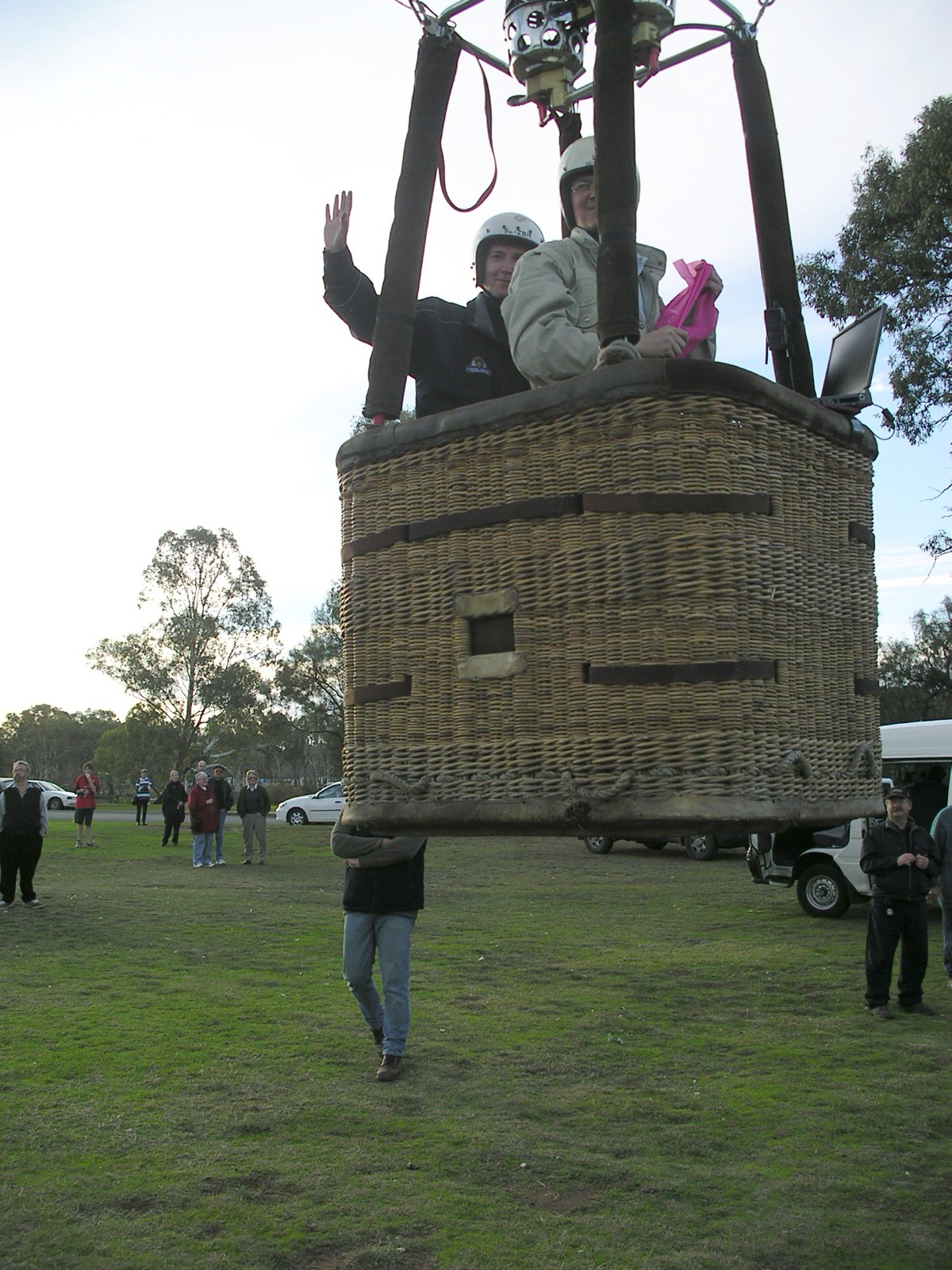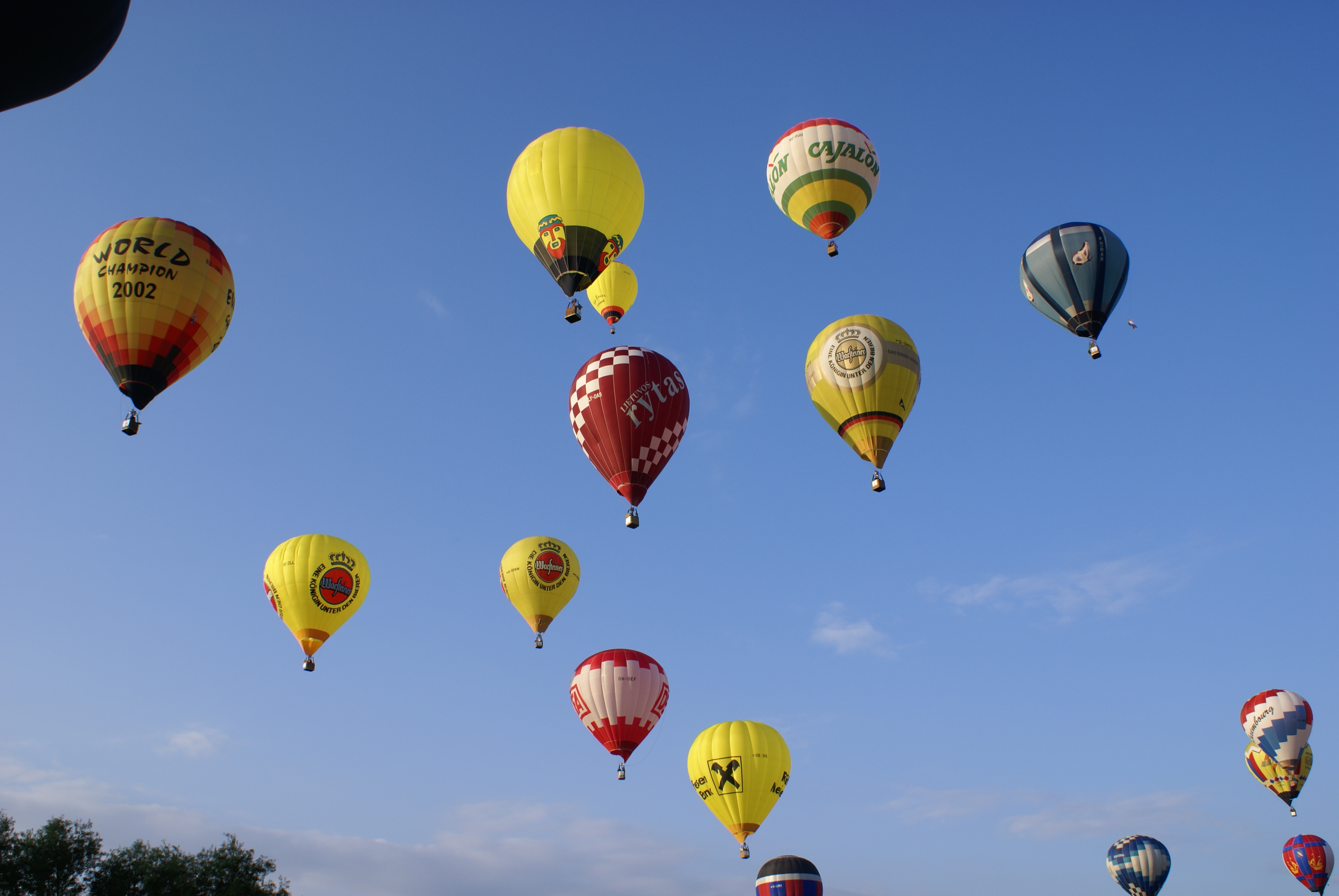Hot air ballooning
From Wikipedia, the free encyclopedia

Hot air balloon pilot and passenger in basket
Hot air ballooning is the activity of flying hot air balloons. Attractive aspects of ballooning include the exceptional quiet (except when the propane burners are firing), the lack of a feeling of movement, and the bird's-eye view. Since the balloon moves with the wind, the passengers feel absolutely no wind, except for brief periods during the flight when the balloon climbs or descends into air currents of different direction or speed.

Hot Air Balloon Competitions
In competition, the pilots need to be able to read different wind directions at different altitudes. Balloon competitions are often called "races" but they're most often a test of accuracy, not speed. For most competitive balloon flights, the goal is to fly as close as possible to one or more exact points called "targets". Once a pilot has directed the balloon as close as possible to a target, a weighted marker with an identifying number written on it is dropped. The distance between a pilot's marker and that target determines his or her score. During some competitive flights, pilots will be required to fly to 5 or more targets before landing. To assist with navigation, topographic maps and GPS units are used. Another common form of competition is the "Hare and Hound" race. The Hare balloon takes off a set amount of time before the Hound balloons and typically flies with multiple altitude changes to make it more difficult for the chasing balloons to match its flight path. After a set amount of flight time, the Hare will land and typically lay out a target cross for the Hounds to drop their weighted markers near. As above, the distance between a pilot's marker and the target determines his or her score.
A balloonist prepares to drop a marker on a competition target, in this case the centre of a road intersection.
Some experienced pilots are able to take a flight in one direction then rise to a different altitude to catch wind in a returning direction. With experience, luck, and the right conditions, some pilots are able to control a precision landing at the destination. On rare occasions, they may be able to return to the launch site at the end of the flight. This is sometimes called a box effect, when winds at altitude flow in the opposite direction of surface winds.